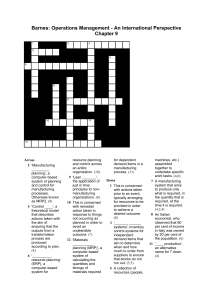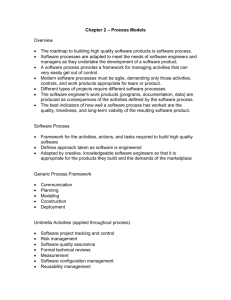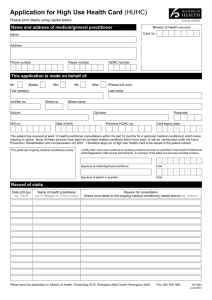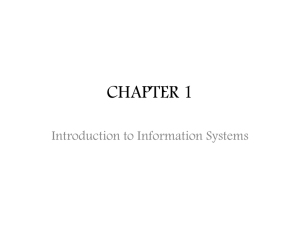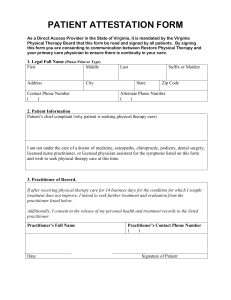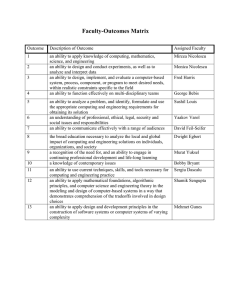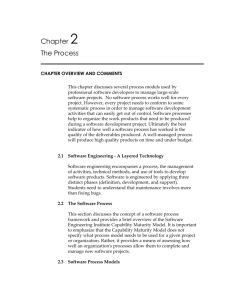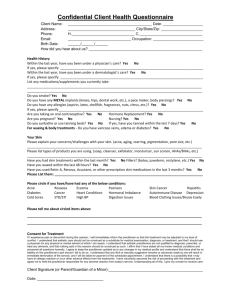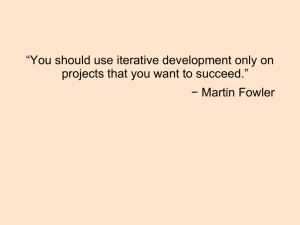Chapter 2 Self
advertisement
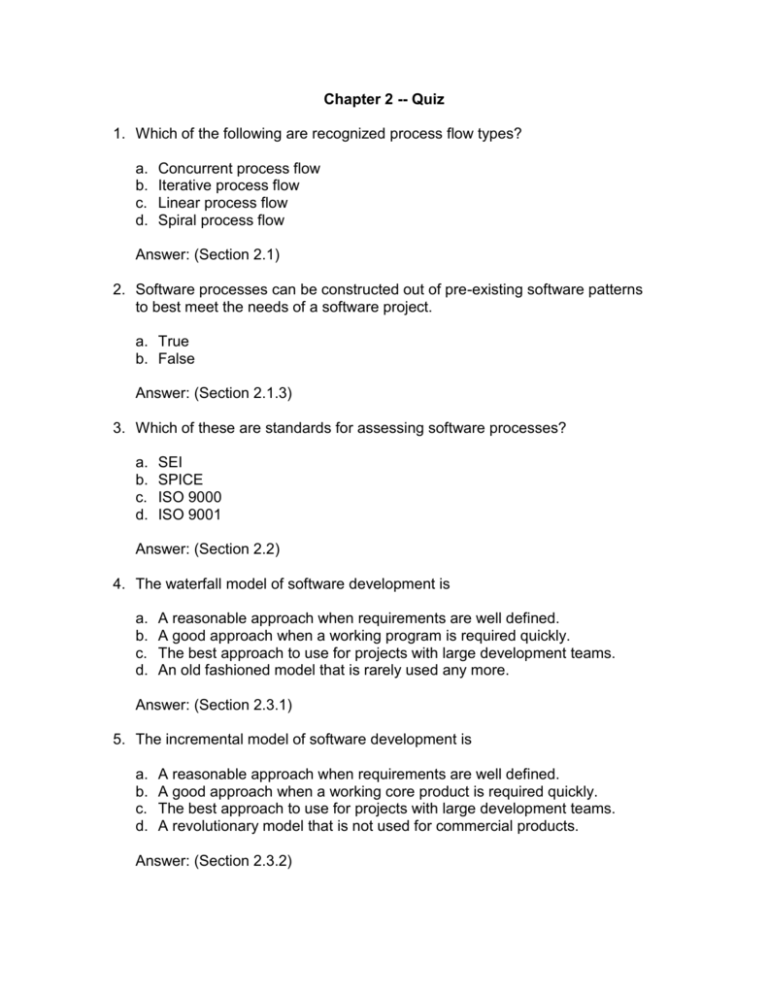
Chapter 2 -- Quiz 1. Which of the following are recognized process flow types? a. b. c. d. Concurrent process flow Iterative process flow Linear process flow Spiral process flow Answer: (Section 2.1) 2. Software processes can be constructed out of pre-existing software patterns to best meet the needs of a software project. a. True b. False Answer: (Section 2.1.3) 3. Which of these are standards for assessing software processes? a. b. c. d. SEI SPICE ISO 9000 ISO 9001 Answer: (Section 2.2) 4. The waterfall model of software development is a. b. c. d. A reasonable approach when requirements are well defined. A good approach when a working program is required quickly. The best approach to use for projects with large development teams. An old fashioned model that is rarely used any more. Answer: (Section 2.3.1) 5. The incremental model of software development is a. b. c. d. A reasonable approach when requirements are well defined. A good approach when a working core product is required quickly. The best approach to use for projects with large development teams. A revolutionary model that is not used for commercial products. Answer: (Section 2.3.2) 6. Evolutionary software process models a. b. c. d. Are iterative in nature Can easily accommodate product requirements changes Do not generally produce throwaway systems All of the above Answer: (Section 2.3.3) 7. The prototyping model of software development is a. b. c. d. A reasonable approach when requirements are well defined. A useful approach when a customer cannot define requirements clearly. The best approach to use for projects with large development teams. A risky model that rarely produces a meaningful product. Answer: (Section 2.3.3) 8. The spiral model of software development a. b. c. d. Ends with the delivery of the software product Is more chaotic than the incremental model Includes project risks evaluation during each iteration All of the above Answer: (Section 2.3.3) 9. The concurrent development model is a. b. c. d. Another name for concurrent engineering. Defines events that trigger engineering activity state transitions. Only used for development of parallel or distributed systems. Used whenever a large number of change requests are anticipated. Answer: (Section 2.3.4) 10. The component-based development model is a. b. c. d. Only appropriate for computer hardware design. Not able to support the development of reusable components. Dependent on object technologies for support. Not cost effective by known quantifiable software metrics. Answer: (Section 2.4.1) 11. The formal methods model of software development makes use of mathematical methods to a. b. c. d. Define the specification for computer-based systems Develop defect free computer-based systems Verify the correctness of computer-based systems All of the above Answer: (Section 2.4.2) 12. Which of these is not one of the phase names defined by the Unified Process model for software development? a. b. c. d. Inception phase Elaboration phase Construction phase Validation phase Answer: (Section 2.5.2) 13. Which of these is not a characteristic of Personal Software Process? a. b. c. d. Emphasizes personal measurement of work product Practitioner requires careful supervision by the project manager Individual practitioner is responsible for estimating and scheduling Practitioner is empowered to control quality of software work products Answer: (Section 2.6.1) 14. Which of these are objectives of Team Software Process? a. b. c. d. Accelerate software process improvement Allow better time management by highly trained professionals Build self-directed software teams Show managers how to reduce costs and sustain quality Answer: (Section 2.6.2) 15. Process technology tools allow software organizations to compress schedules by skipping unimportant activities. a. True b. False Answer: (Section 2.7) 16. It is generally accepted that one cannot have weak software processes and create high quality end products. a. True b. False Answer: (Section 2.8)
